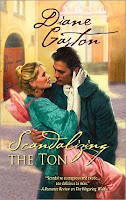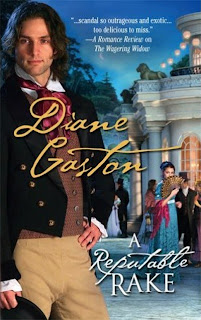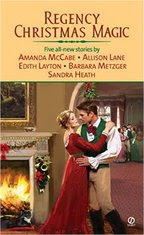So now–The Further Adventures of Amanda’s Vacation Pics!
I visited the Tower of London on the last day of my trip, and it was the perfect morning for it. Overcast, a bit chilly, but not yet rainy. (It waited to pour down until later that afternoon, when I happened to be walking across Tower Bridge to have lunch at The Anchor. Fun).
It wasn’t very crowded there yet–in fact, I had Tower Green practically to myself for a few minutes! I didn’t see any of the famous ghosts, but I did get a rather melancholy feeling. Maybe it’s because Halloween is coming up, or maybe it’s just that history geek-ness that causes intense attachments to people and events long gone, but it does seem that certain places hold onto strong emotions. At the Petit Trianon, I wanted to run and laugh and roll in the grass (I didn’t–I’m a good history geek who obeys Stay Off The Grass signs!). At the Tower I sometimes wanted to cry.
 The Tower, of course, is not just one tower, but a compound of many buildings from different eras. The oldest, and most recognizable, is the White Tower, built by William the Conquerer in 1078, of Caen stone brought from France (it was later whitewashed, which gave it the name). In the 12th century, King Richard the Lionheart increased the White Tower with a curtain wall and had a moat dug around it. In the 13th century, Henry III turned it into a royal residence and had palatial buildings constructed within the Inner Bailey, south of the White Tower. (most of these were later destroyed by Cromwell).
The Tower, of course, is not just one tower, but a compound of many buildings from different eras. The oldest, and most recognizable, is the White Tower, built by William the Conquerer in 1078, of Caen stone brought from France (it was later whitewashed, which gave it the name). In the 12th century, King Richard the Lionheart increased the White Tower with a curtain wall and had a moat dug around it. In the 13th century, Henry III turned it into a royal residence and had palatial buildings constructed within the Inner Bailey, south of the White Tower. (most of these were later destroyed by Cromwell).
A few of the buildings built along the Inner Wall are Lanthorn Tower, Devereaux Tower, Beauchamp Tower (pronounced Beecham–I went here to look at the restored Renaissance grafitti, and peer out the window at the scaffold site). There is also the Bloody Tower (nicknamed after the Princes of the Tower).
 The river entrance to the Tower, called Traitor’s Gate, cuts through St. Thomas’s Tower. As I stared down at the stone steps leading up from the Gate, I remembered the tale of Elizabeth I, who was sent to the Tower as a princess by her sister Queen Mary during the Wyatt Rebellion. It was pouring rain, and Elizabeth plopped herself down on the wet stones, refusing to go inside until she had proclaimed her innocence (“It is better sitting here than in a worse place”).
The river entrance to the Tower, called Traitor’s Gate, cuts through St. Thomas’s Tower. As I stared down at the stone steps leading up from the Gate, I remembered the tale of Elizabeth I, who was sent to the Tower as a princess by her sister Queen Mary during the Wyatt Rebellion. It was pouring rain, and Elizabeth plopped herself down on the wet stones, refusing to go inside until she had proclaimed her innocence (“It is better sitting here than in a worse place”).
 The Tower is certainly best known for its famous prisoners (like Elizabeth). The first prisoner was Ranulf Flambard in 1100, when he was Bishop of Durham and found guilty of extortion. He was also the first (and one of the few) escapees, climbing down a rope, which had been smuggled in via a cask of wine, from the White Tower. There was also Sir Thomas More (imprisioned on April 17, 1535 and executed on Tower Hill July 6). Henry VI, murdered in the Tower May 21, 1471 (on this day each year, the Provosts of Eton College and King’s College, Cambridge, lay roses and lillies on the spot where he died). Edward V and his brother Richard, the Princes of the Tower. Sir William de la Pole, the longest-held prisioner (1502-1539). John Gerard, one the many undercover Jesuit missionaries captured during Elizabeth’s reign (he also escaped, climbing a rope over the moat). Sir Walter Raleigh spent 13 years there (1603-1616), but lived in rather comfy quarters where his family could visit–he even planted New World tobacco on Tower Green. Guy Fawkes, of “gunpowder treason and plot” fame. And, during the Regency period, there were Johan Anders Jagerhorn, a Swedish officer and cohort of Lord Edward Fitzgerald, who was involved in the Irish uprising, and Lord George Gordon (of the Gordon Riots)
The Tower is certainly best known for its famous prisoners (like Elizabeth). The first prisoner was Ranulf Flambard in 1100, when he was Bishop of Durham and found guilty of extortion. He was also the first (and one of the few) escapees, climbing down a rope, which had been smuggled in via a cask of wine, from the White Tower. There was also Sir Thomas More (imprisioned on April 17, 1535 and executed on Tower Hill July 6). Henry VI, murdered in the Tower May 21, 1471 (on this day each year, the Provosts of Eton College and King’s College, Cambridge, lay roses and lillies on the spot where he died). Edward V and his brother Richard, the Princes of the Tower. Sir William de la Pole, the longest-held prisioner (1502-1539). John Gerard, one the many undercover Jesuit missionaries captured during Elizabeth’s reign (he also escaped, climbing a rope over the moat). Sir Walter Raleigh spent 13 years there (1603-1616), but lived in rather comfy quarters where his family could visit–he even planted New World tobacco on Tower Green. Guy Fawkes, of “gunpowder treason and plot” fame. And, during the Regency period, there were Johan Anders Jagerhorn, a Swedish officer and cohort of Lord Edward Fitzgerald, who was involved in the Irish uprising, and Lord George Gordon (of the Gordon Riots)
 So, anyway, I took the good advice of many guidebooks to get to the Tower early, and was very glad I did! I zipped through the Crown Jewels (very sparkly! I especially liked Queen Victoria’s little diamond crown), then just wandered around. I saw Raleigh’s rooms in the Bloody Tower, the armorie museum in the White Tower, and more than a few gift shops.
So, anyway, I took the good advice of many guidebooks to get to the Tower early, and was very glad I did! I zipped through the Crown Jewels (very sparkly! I especially liked Queen Victoria’s little diamond crown), then just wandered around. I saw Raleigh’s rooms in the Bloody Tower, the armorie museum in the White Tower, and more than a few gift shops.
 Then I took a quick peek at the Chapel of St. Peter ad Vincula and stood on Tower Green for a while. On the scaffold site is a flat glass monument, engraved with the words “Gentle visitor pause awhile: where you stand death cut away the light of many days: here jeweled names were broken from the vivid thread of life: may they rest in peace while we walk the generations around their strife and courage: under the restless skies.” Tower Green was a very privileged place for private executions; only 7 people were beheaded here. William, Lord Hastings (1483); Anne Boleyn (1536); Margaret Pole (1541); Katherine Howard and Jane Boleyn (1542); Jane Grey (1554); and the Earl of Essex in 1601.
Then I took a quick peek at the Chapel of St. Peter ad Vincula and stood on Tower Green for a while. On the scaffold site is a flat glass monument, engraved with the words “Gentle visitor pause awhile: where you stand death cut away the light of many days: here jeweled names were broken from the vivid thread of life: may they rest in peace while we walk the generations around their strife and courage: under the restless skies.” Tower Green was a very privileged place for private executions; only 7 people were beheaded here. William, Lord Hastings (1483); Anne Boleyn (1536); Margaret Pole (1541); Katherine Howard and Jane Boleyn (1542); Jane Grey (1554); and the Earl of Essex in 1601.
 Behind the site is the Chapel, where those 7 (along with others, like More, Jane Grey’s husband Guildford Dudley, and Charles II’s illegitimate son the Duke of Monmouth) are buried beneath the floor. Alongside is Beauchamp Tower (where that grafitti can be seen, including Guildford’s pathetic “Jane”, and an RD said to be carved by Robert Dudley). Across is the building known as the Queen’s house (where Anne Boleyn spent her last days). On the west is the rampart known as “Elizabeth’s walk”; next to it once stood the house where Jane Grey was imprisoned.
Behind the site is the Chapel, where those 7 (along with others, like More, Jane Grey’s husband Guildford Dudley, and Charles II’s illegitimate son the Duke of Monmouth) are buried beneath the floor. Alongside is Beauchamp Tower (where that grafitti can be seen, including Guildford’s pathetic “Jane”, and an RD said to be carved by Robert Dudley). Across is the building known as the Queen’s house (where Anne Boleyn spent her last days). On the west is the rampart known as “Elizabeth’s walk”; next to it once stood the house where Jane Grey was imprisoned.
I stood there for a while, imagining Anne Boleyn walking from that house in her black gown, trying to be dignified in front of the witnesses. What was she thinking? Of mistakes, regrets, good memories? The 3-year-old daughter she left behind? She felt the cool breeze on her face, just as I did that day, and those very same buildings were the last thing she saw. I admit it–I did get a little tearful.
 Then I had a cup of tea at the New Armories restaurant and watched the ravens hop around. (Oh yes, the ravens! They stay there because of the legend that if the ravens ever leave the Tower, the White Tower, the monarchy, and the whole kingdom will fall. They’re huge, and a little scary).
Then I had a cup of tea at the New Armories restaurant and watched the ravens hop around. (Oh yes, the ravens! They stay there because of the legend that if the ravens ever leave the Tower, the White Tower, the monarchy, and the whole kingdom will fall. They’re huge, and a little scary).
All in all, a really great day (even if I didn’t see any ghosts!). Have you had adventures at the Tower, or anyplace that evokes the past for you in a big way? Seen any ghosts?
Oh, and there were a few more good Renaissance CDs I found to add to my list last week! “The Triumphs of Oriana” and “Elizabeth’s Music” (both from the Chandos label), and “Pastyme With Good Companye: Music From the Court of Henry VIII”. You can go here to find a poem by Anne Boleyn set to music.
 (Aren’t you proud of me? I got through the whole blog without once reminding you that Scandalizing the Ton is still in bookstores and available online….Oops. Well, I almost made it.)
(Aren’t you proud of me? I got through the whole blog without once reminding you that Scandalizing the Ton is still in bookstores and available online….Oops. Well, I almost made it.)























